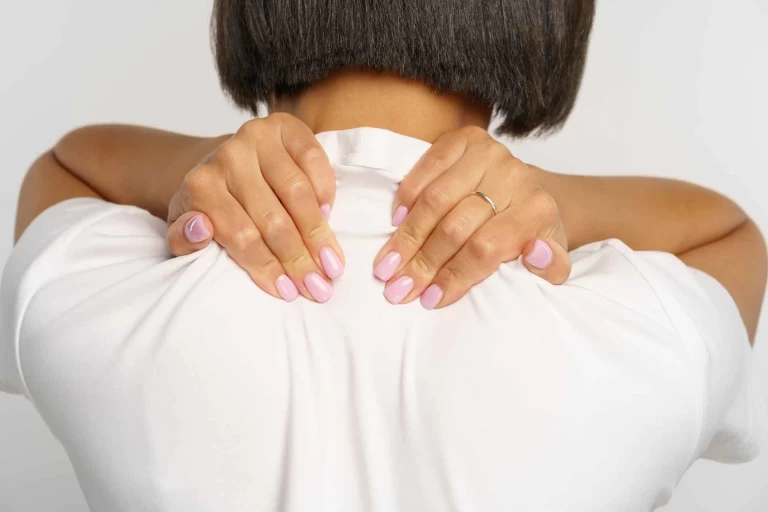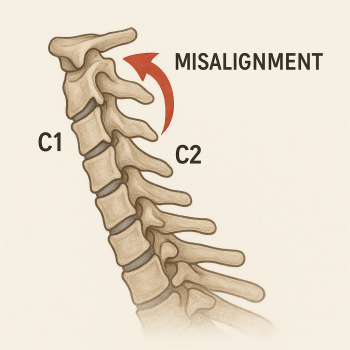
TMJ Dysfunction and the Neck: A Hidden Connection
When you think of TMJ dysfunction, you might imagine jaw pain, clicking, or difficulty chewing. What many people don’t realize is how closely the jaw and neck work together. The cervical spine, especially the upper neck, plays a critical role in the health and function of the temporomandibular joint (TMJ).
Ignoring this connection can lead to temporary relief at best, while addressing it through upper cervical care often leads to lasting healing.
The TMJ and Upper Cervical Spine Relationship
Your TMJ is a complex joint that allows you to chew, talk, and yawn. Just above it sits the upper cervical spine, including the atlas (C1) and axis (C2) vertebrae. These structures are connected by muscles, ligaments, and nerves that coordinate jaw and head movement.
When the upper cervical spine becomes misaligned due to posture, stress, injury, or even subtle microtrauma, it can cause:
- Muscle imbalance that pulls the jaw out of alignment
- Nerve irritation that creates pain and inflammation
- Postural stress that strains the TMJ over time
This is why upper cervical chiropractic care is such a powerful approach to TMJ dysfunction.
Signs Your TMJ Problem May Be Neck-Related
1. Jaw pain that worsens with neck stiffness
2. Headaches at the base of the skull or behind the eyes
3. Clicking or popping in the jaw along with neck soreness
4. Limited jaw opening paired with reduced neck movement
5. A history of whiplash or neck trauma prior to TMJ symptoms
If these sound familiar, your TMJ issue likely has a cervical component.
What Is Upper Cervical Care?
Upper cervical care is a gentle, precise chiropractic technique focused on the atlas (C1) and axis (C2) vertebrae. These bones are key to head and jaw alignment as well as overall nervous system balance.
Unlike traditional adjustments, upper cervical corrections use precise imaging and gentle adjustments to restore alignment without twisting or cracking. By balancing the neck, the jaw can move naturally again without stress or tension.
Benefits of Upper Cervical Care for TMJ Dysfunction
1. Corrects Jaw Alignment: Balancing the neck allows the jaw to return to a neutral position.
2. Relieves Muscle Tension: Neck muscles can relax, reducing strain on the TMJ.
3. Reduces Pain and Inflammation: Healthy nerve function decreases jaw discomfort.
4. Improves Posture: Proper alignment supports the jaw and prevents recurring issues.
5. Targets the Root Cause: Goes beyond symptom management for long-term relief.
A Whole-Body Approach to TMJ Healing
TMJ dysfunction often involves more than just the jaw. Stress, posture, injury, and lifestyle can all contribute. Pairing upper cervical care with jaw mobilization, soft tissue work, and supportive exercises creates a comprehensive solution that addresses the true cause of dysfunction.
Patients who include upper cervical chiropractic care frequently report:
- Less jaw pain and clicking
- Fewer headaches and neck stiffness
- Better jaw mobility
- Long-term relief without constant flare-ups
When to See an Upper Cervical Chiropractor
If you’ve been struggling with TMJ pain and traditional treatments haven’t worked, your neck may be the missing link. A skilled upper cervical chiropractor can evaluate your alignment, correct imbalances, and restore harmony between your jaw and cervical spine.
The relationship between the TMJ and the cervical spine is undeniable. Addressing the neck through upper cervical chiropractic care can unlock lasting relief from jaw pain and dysfunction. Instead of masking symptoms with night guards or medication, this gentle approach gets to the root cause.
Your jaw and neck are designed to work together—make sure they’re aligned and balanced.
Struggling with jaw pain or TMJ dysfunction? Don’t overlook your neck. Schedule a consultation with our office today and discover how gentle upper cervical care can restore balance, relieve pain, and help you smile again without discomfort.







Leave a comment